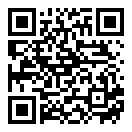Pages:
83-102
Receive Date: 2025/12/01
Accept Date: 2025/12/01
Abstract:
The arrival of modernity in the city of Yazd has created a multiple structure in this city, and has changed the social relations in Yazd society. From this perspective, in the city of Yazd, even in areas where the spatial structure is still traditional, family relationships have changed into pseudo-modern. The aim of this study is to investigate the spatial manifestations of modernity and its social effects that are visible in Yazd. Data was collected through documentive studies, field observations, and semi-structured interviews and then, it was analyzed qualitatively. In the interview section, the statistical sample consisted of 15 families living in traditional spaces and 15 families residing in modern spaces. In terms of differences in occupation, age, gender and marital status in different areas of Yazd, sample was selected using saturation method. The results show that the manifestations of the modern spaces in Yazd can be divided into four parts: transitional spaces, hybrid spaces, modern spaces and traditional spaces. Also, there are visible proportions of social relationships appropriate to each of the modern and traditional spaces.
چکیده و کلیدواژه فارسی (Persian)
Title :نمودهای فضایی مدرنیته در شهر یزد و پیامدهای اجتماعی آن
Abstract:
ورود مدرنتیه در شهر یزد به لحاظ فضایی، ساختاری چندبخشی در این شهر به وجود آورده و به لحاظ اجتماعی، مناسبات جامعه یزد را دچار دگرگونی کرده است. از این منظر، در شهر یزد حتی در بخش هایی که هنوز ساختار فضایی آن سنتی است، مناسبات خانوادگی و خویشاوندی تغییر کرده و از نظر محتوایی رنگ و بویی شبه مدرن گرفته است. هدف این پژوهش، بررسی نمودهای فضایی مدرنیته و نسبت های قابل مشاهده اجتماعی آن در شهر یزد است. داده ها از طریق مطالعات اسنادی، مشاهدات میدانی و مصاحبه نیمه ساخت یافته جمع آوری شده، به صورت کیفی مورد تجزیه و تحلیل قرار گرفته است. نمونه آماری در بخش مصاحبه ها، شامل 15 خانواده از فضاهای سنتی و 15 خانواده از فضاهای مدرن می باشد که با لحاظ تفاوت های شغلی، سنی، جنسی و وضعیت تأهل از فضاهای مختلف شهر یزد، با استناد به قاعده اشباع انتخاب شده اند. نتایج نشان می دهد که نمودهای فضاهایی مدرنیته در شهر یزد، به چهار بخش قابل تقسیم بندی است: فضاهای در حال گذار، فضاهای هیبریدی، فضاهای مدرن و فضاهای سنتی. همچنین در فضاهای مدرن و سنتی، نسبت های قابل مشاهده ای از روابط اجتماعی متناسب با آن فضا وجود دارد.
References:
- افروغ، عماد، 1377، فضا و جامعه، فضا و نابرابري اجتماعي، تهران، دانشگاه تربيت مدرس.
- اداره کل ميراث فرهنگي صنايع دستي و گردشگري استان يزد، 1391، يزد پرديس کوير راهنماي گردشگري استان يزد، انتشارات آرتاکاوا.
- اکبرزاده، محسن، 1396، دوهفتهنامه طراح امروز، ش 22، ص 3.
- برمن، مارشال، 1380، تجربه مدرنيته، ترجمة مراد فرهادپور، تهران، طرح نو.
- ببي، ارل، 1381، روشهاي تحقيق در علوم اجتماعي، ترجمة رضا فاضل، تهران، سمت.
- پرهام، باقر، 1355، «زندگي و شهر»، نامه علوم اجتماعي، ش 20، دانشگاه تهران، تهران.
- توسلي، غلامعباس، 1369، نظريههاي جامعهشناسي، تهران، سمت.
- بهنام، جمشيد و رامين جهانبگلو، 1382، تمدن و تجدد، تهران، نشر مزکز.
- جيکوب، جين، 1373، شهر يک اثر هنري نيست، ترجمة منوچهر مزيني، از کتاب مقالاتي در باب شهر و شهرسازي، تهران.
- حقيقي، شاهرخ، 1381، گذار از مدرنيته، تهران، نشر آگه.
- حييم، سليمان، 1374، فرهنگ معاصر انگليسي، تهران، فرهنگ معاصر.
- داوري اردکاني، رضا، 1379، اتوپي و عصر جديد، تهران، نشر ساقي.
- ژيلنيتس، آندژي يان لئون، 1393، فضا و نظريه اجتماعي، ترجمة محمود شورجه، تهران، مديران روز.
- فرخفر، سوده، 1392، بررسي ويژگيهاي معماري فضاي هيبريدي و مقايسه آن با معماري اسلامي، اولين همايش ملي ساختمان آينده، ساريف کانون مهندسين ساري.
- شولتز، کريستيان نورنرگ، 1353، هستي، فضا و معماري، ترجمة محمدحسن حافظي، تهران، بينا.
- لاين، ديويد، 1380، پسامدرنيته، ترجمة محسن حکيم، تهران، نشر آشتيان.
- مک له لان، ديويد، 1379، کارل مارکس، ترجمة عبدالعلي دستغيب، تهران، نشر پرسش.
- وبر، ماکس، 1369، شهر در گذر زمان، ترجمة شيوا کاوياني، تهران، شركت سهامي انتشارات.
- هولستي، ال، آر، 1391، تحليل محتواي در علوم اجتماعي و انساني، ترجمة نادر سالارزاده اميري، تهران، دانشگاه علامه طباطبائي
- هادي جابري مقدم، مرتضي، 1384، شهر و مدرنيته، تهران، فرهنگستان هنر.
- شماعي، علي، 1389، «نقش الگوهاي شهرسازي سنتي در شهرسازي مدرن شهر يزد»، مطالعات شهر ايراني اسلامي، ش 1، ص93-105
- Brunet R, et al, 1992, Collection dynamigue duterri to ire, les most de la geographie dictionnaire critigue Gip reclue, la documentation francaise.
- Durkeim, 1982, The Rules of sociological Method and selected texts on sociology ain its Methods.
- Frisby, D, 1997, Intyoduction to the texts in frisby, d. and feathersone , M. simmel on culture, London, sage.
- Simmiel, G, 1997, The sociology of space, in frisby, D. and Featherstone , M . (eds) sinmelon culture, London.
- Goffman, E, 1971, The presention of self in Every day life, Harmonds worth: pelican.
- Werlen, B, 1993, society, Action and space, London, routledg.
Cite this article:
RIS
Mendeley
BibTeX
APA
MLA
HARVARD
VANCOUVER
APA | MLA | HARVARD | VANCOUVER
Nosratinejad, Farhad , Sh’abanzadeh, Mohammad Reza.(2025) The Spatial Manifestations of Modernity in Yazd and its Social Outcomes. Ma`rifat-e Farhangi Ejtemai, 8(4), 83-102
APA | MLA | HARVARD | VANCOUVER
Farhad Nosratinejad; Mohammad Reza Sh’abanzadeh."The Spatial Manifestations of Modernity in Yazd and its Social Outcomes". Ma`rifat-e Farhangi Ejtemai, 8, 4, 2025, 83-102
APA | MLA | HARVARD | VANCOUVER
Nosratinejad, F, Sh’abanzadeh, M.(2025) 'The Spatial Manifestations of Modernity in Yazd and its Social Outcomes', Ma`rifat-e Farhangi Ejtemai, 8(4), pp. 83-102
APA | MLA | HARVARD | VANCOUVER
Nosratinejad, F, Sh’abanzadeh, M. The Spatial Manifestations of Modernity in Yazd and its Social Outcomes. Ma`rifat-e Farhangi Ejtemai, 2025; 8(4): 83-102




